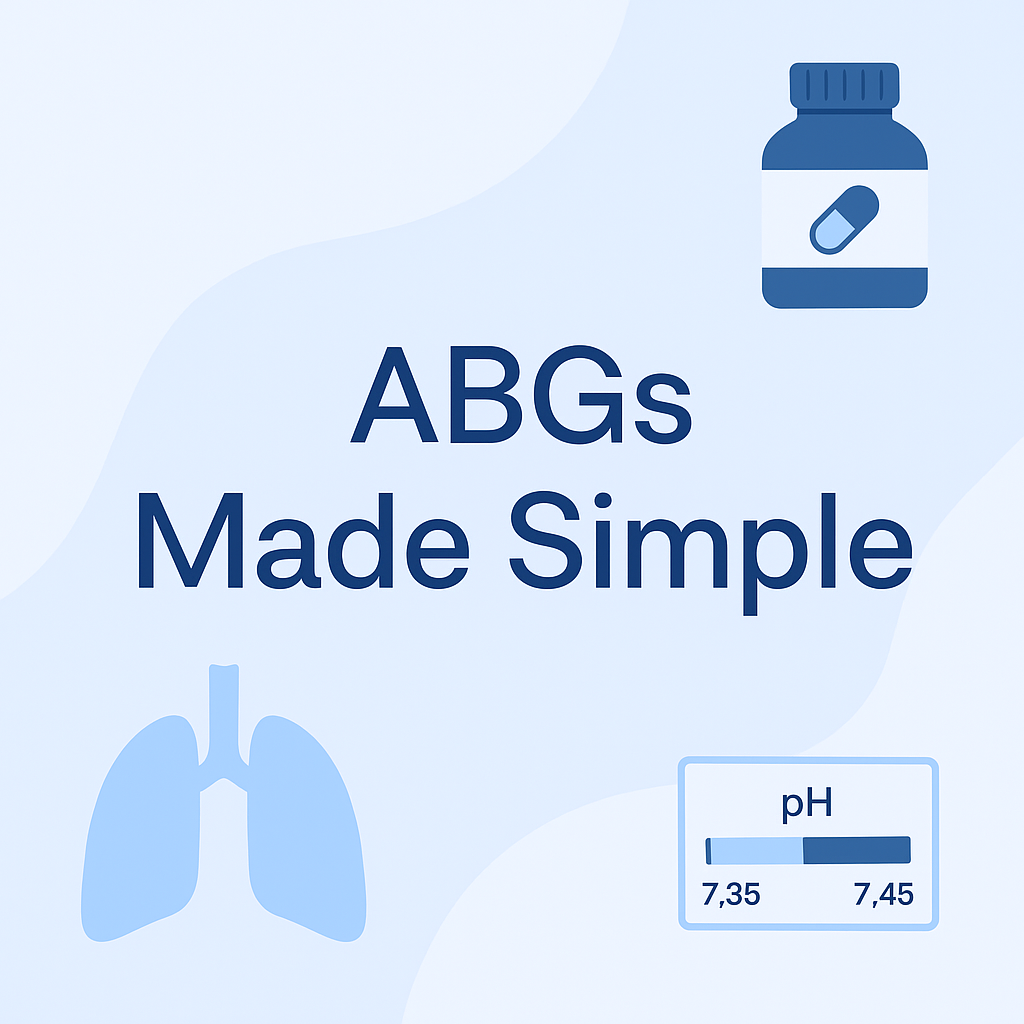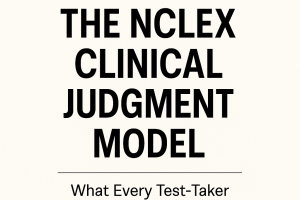ABGs Made Simple: Mastering Arterial Blood Gas Interpretation for the NCLEX

Arterial Blood Gases (ABGs) can seem intimidating—but they’re a favorite topic on the NCLEX because they assess your ability to recognize life-threatening acid-base imbalances. If you’ve ever felt lost when interpreting pH, PaCO₂, or HCO₃⁻ levels, this guide is your step-by-step roadmap to ABG mastery.
What Are ABGs and Why Are They Important?
ABGs are lab tests that measure:
- pH – the acidity or alkalinity of the blood
- PaCO₂ – the partial pressure of carbon dioxide
- HCO₃⁻ – bicarbonate, a base that balances pH
- PaO₂ and O₂ sat – indicators of oxygenation
On the NCLEX, you’ll be expected to:
- Interpret ABG results
- Identify if the imbalance is respiratory or metabolic
- Determine if the body is compensating
Normal ABG Values to Memorize
| Value | Normal Range |
|---|---|
| pH | 7.35 – 7.45 |
| PaCO₂ | 35 – 45 mm Hg |
| HCO₃⁻ | 22 – 26 mEq/L |
| PaO₂ | 80 – 100 mm Hg |
| SaO₂ | 95% – 100% |
3 Key Steps to Interpret ABGs (NCLEX-Friendly Method)
Step 1: Look at the pH
- < 7.35 = Acidosis
- 7.45 = Alkalosis
Step 2: Determine if it’s Respiratory or Metabolic
- CO₂ = Respiratory
- HCO₃⁻ = Metabolic
Match the abnormal value with the pH to determine the cause.
Step 3: Check for Compensation
- If the opposite system (e.g., kidneys for respiratory, lungs for metabolic) is trying to balance pH, it’s compensation.
- Uncompensated = other value is normal
- Partially compensated = both values abnormal, pH still off
- Fully compensated = both values abnormal, pH normal
Common NCLEX Examples
Example 1
- pH: 7.30 (low)
- PaCO₂: 50 (high)
- HCO₃⁻: 24 (normal)
Interpretation: Respiratory Acidosis, Uncompensated
Example 2
- pH: 7.48 (high)
- PaCO₂: 32 (low)
- HCO₃⁻: 22 (normal)
Interpretation: Respiratory Alkalosis, Uncompensated
Example 3
- pH: 7.36 (normal, but slightly low)
- PaCO₂: 50 (high)
- HCO₃⁻: 30 (high)
Interpretation: Respiratory Acidosis, Fully Compensated
What the NCLEX May Ask You
- Identify the ABG imbalance
- Know the cause (e.g., hypoventilation = respiratory acidosis)
- Know the expected interventions
- Recognize when the body is compensating
Common Causes of ABG Imbalances
| Condition | ABG Pattern |
|---|---|
| COPD, drug overdose | Respiratory Acidosis |
| Hyperventilation (e.g., anxiety) | Respiratory Alkalosis |
| DKA, renal failure | Metabolic Acidosis |
| Vomiting, NG suctioning | Metabolic Alkalosis |
on’t overthink ABGs. Stick to a consistent interpretation method and practice with real scenarios. The NCLEX wants you to:
- Think critically
- Recognize patterns
- Know what actions to take based on the results
With repetition and confidence, ABGs will go from confusing to second nature.






